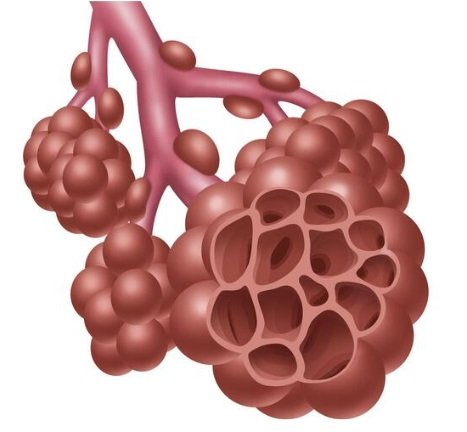Respiratory System
Development of the respiratory system is associated with the development of the primitive gut tube, or the early digestive system.
Because the lungs develop as an outpouching (diverticulum) of the primitive foregut, it composed of both endodermal, and mesodermal tissues. The endoderm component gives rise to the mucosal lining of the bronchi and epithelial cells of the alveoli. The mesoderm component gives rise to the vasculature, connective tissue, smooth muscles, pleura, and cartilage associated with the bronchi.
For ease of understanding, the development of the lungs can be summarized into the following stages which will each be discussed separately:
Embryonic Stage
Pseudoglandular stage
Canalicular stage
Saccular stage
Alveolar stage
Embryonic Stage
By week three of development, a respiratory diverticulum appears as an outgrowth in the region of the ventral wall of the foregut. This respiratory diverticulum is otherwise known as a lung bud and it begins to expand and invade the mesenchyme that surrounds the developing foregut. While the lung bud initially communicates with the ventral foregut, through development, it will eventually separate, as seen in the above image.
The separation of the developing trachea and esophagus occurs as tracheoesophageal folds begin to form, and fuse together to form the tracheoesophageal septum.
As the respiratory diverticulum develops, its distal region will begin to bifurcate into the right and left primary bronchial buds, while its proximal region will form the trachea and the larynx.
Through further development, the primary bronchial buds will form three secondary bronchial buds on the right, and two secondary bronchial buds on the left, giving rise to the asymmetrical anatomy of the lungs. With even further development, each secondary bronchial bud will form ten tertiary bronchial buds on both sides, thereby bringing an end to the embryonic stage of development of the respiratory system.
Pseudoglandular Stage
From the sixth to sixteenth weeks of development, the respiratory tree will continue branching several times until the terminal bronchioles are formed. The intricate passageway of bronchioles will be lined with specialized respiratory epithelium (simple ciliated columnar epithelium which transitions to simple cuboidal epithelium).
At this stage, cartilage, smooth muscles, and lung specific type II alveolar cells also begin developing.
Canalicular Stage
During the sixteenth to twenty-eighth week the canalicular stage of development takes place. Here, the terminal bronchioles are now able to divide into respiratory bronchioles that are surrounded by increased vascularization. Eventually, the lumen of the respiratory bronchioles begin to enlarge.
Simultaneously, at this stage, canals and ducts begin to branch out from the bronchioles and form a continuous passageway towards the alveolar sacs.
As each canal branches out of the terminal bronchioles, it will eventually form an acinus. An acinus is the collective term for the terminal bronchiole, alveolar duct, and terminal sac. This, is also known as the primitive alveolus.
As the lumen of the developing ducts get progressively wider, some of the epithelial cells of the primitive alveoli will begin to flatten and give rise to lung specific type I alveolar cells which will later be responsible for gaseous exchange.
By the end of the canalicular stage, some primitive alveoli may be developed enough, and vascularized enough, to support gaseous exchange. Therefore, infants born at this premature stage of development, may survive with additional medical interventions.
Saccular Stage
Between week twenty eight and thirty six of development, the respiratory branches will begin to give rise to their terminal branches. These terminal branches will lead into terminal sacs that are lined with lung specific type I and type II alveolar cells.
The primitive alveoli, and the blood-air barrier between the epithelial lung specific type I alveolar cells and endothelial cells of the capillaries, will continue to develop.
Simultaneously, the lung specific type II alveolar cells will being to produce surfactant. This is a phospholipoprotein that reduces the surface tension of the fluid in the lungs and prevents the alveoli from collapsing.
Alveolar Stage
The final stage of development of the respiratory system, the alveolar stage, begins eight months into development and continues through to approximately eight years of age. During the alveolar stage, the alveoli mature to allow for continuous, undisrupted respiration.
Clinical Notes:
Tracheoesophageal fistula occurs when there is an abnormal connection remaining between the lumen of the trachea and esophagus, caused by an incompletely formed tracheoesophageal septum.
Respiratory distress syndrome occurs when there is a lack of surfactant, usually as a result of premature birth. This might lead to the lungs collapsing and making respiration difficult for newborn babies.






